Fashion Has Not Changed in 20 Years
What will way be like 20 years from now?
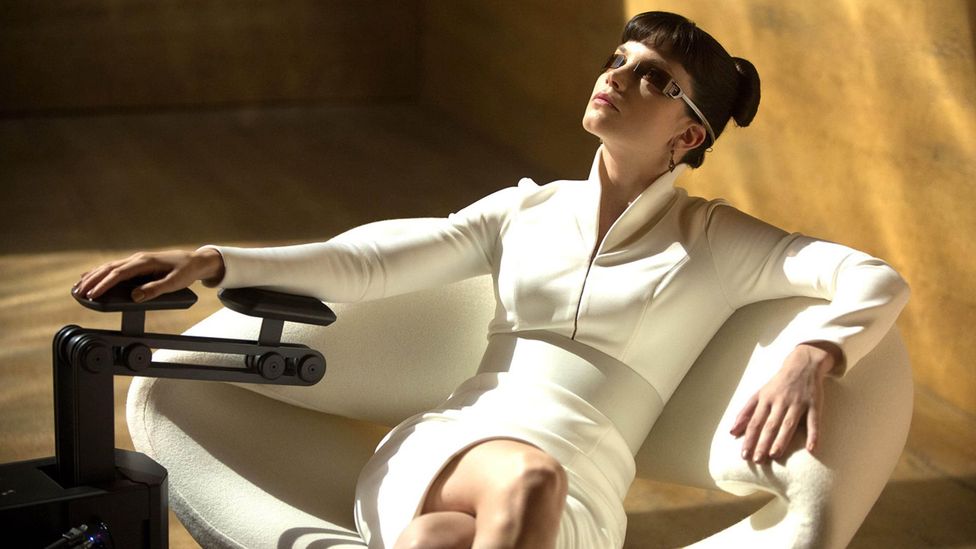
From virtual collections to limitless creativity, in the kickoff of a new series on hereafter culture, Bel Jacobs explores what style will expect similar in two decades' fourth dimension.
Westward
Sentry any recent science-fiction movie and y'all'll be struck by divergent visions of the future, as seen through the eyes of Hollywood costume departments. Follow the sartorial road of Ryan Coogler's Black Panther, for example, and nosotros can expect to sheath our fortunately pneumatic bodies in reinforced scuba suits. Plow instead to the post-apocalyptic worlds of Blade Runner 2049 and the Goggle box series The Area, and the offer is bastardised street wearable, scavenged from the wardrobes of the past.
More similar this:
- Is it the end for the arrange?
- What does luxury mean at present?
- The ascension of guilt-free gems
Annihilation, apparently, is amend than what we have now. From questions over mod slavery to the planet-levelling furnishings of over-consumption, mode is nether fire – and brands are having to adjust. According to a recent study shared at the Camera Nazionale della Moda Italiana'southward third international roundtable on sustainability in Milan, buyers at stores like Barneys and Saks in the US and Printemps in France wait to nearly double their full spending on sustainable products in the next five years, from 23% to 40%.
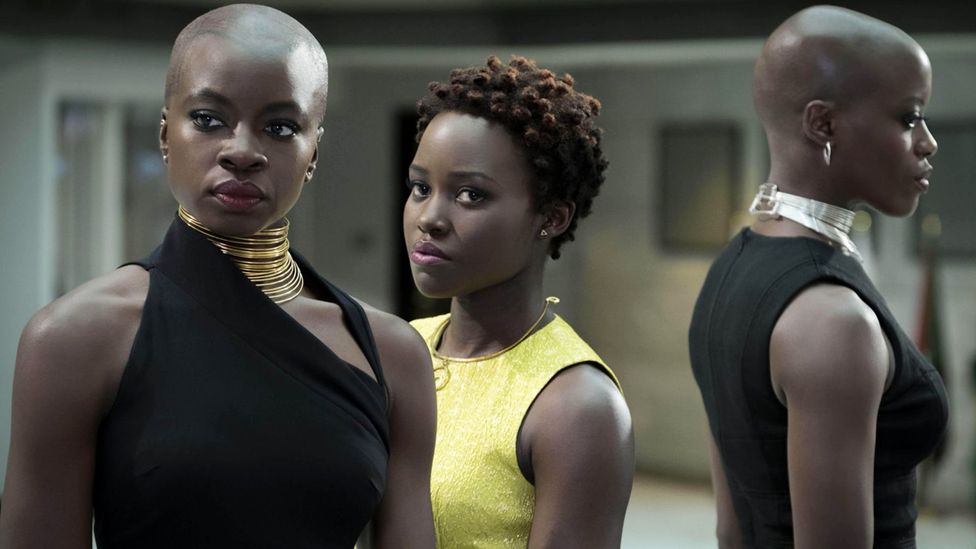
The costume blueprint for the futuristic film Blackness Panther was widely acclaimed, and won the 2019 Oscar (Credit: Alamy)
What looks fix to remain constant, however, is the urge to eat, hard-wired into human nature. As Dr Mark Summertime from Leeds Academy Schoolhouse of Design wrote, in Fixing Manner, this year's report past the Environmental Audit Committee: "fashion satisfies consumers' psychogenic needs… and any solution has to recognise – and maintain – these benefits.
Accordingly, innovators are exploring future solutions that offer all the hit of the new purchase without stripping the earth – and the answers, increasingly, announced to lie in the digital world. "We're finally seeing the digital manufacture revolutionise age-old practice and evolving over the adjacent 20 years," says Rachel Stott of The Future Laboratory. "Immaterial and digital fashion offers opportunities for brands to exert creativity, and connect with consumers through a different medium."

In Tv set series The Expanse the post-apocalyptic look is scavenged street habiliment (Credit: Alamy)
And in one manifestation, the dress won't exist at all. When Norwegian retailer Carlings launched a digital collection concluding yr, the fashion – futuristic streetwear, bought online and e-fitted to users' photos – was created to counter the 'wear once, take a selfie, chuck it away' philosophy of today'southward frantic online influencer. "We've opened up a world of taking chances with styling, without leaving a negative footprint on the world," Morten Grubak of Virtue Nordic, told iD's Jake Hall, at the time.
For the virtual generation, the digital collection is just a logical step forrad. Fervent players of games similar Fortnite, The Sims and Sansar already spend billions on things that aren't actually there – including clothes. "Increasingly, nosotros will see digital collections and garments free from physical and creative restrictions become office of the fashion landscape," says Stott.
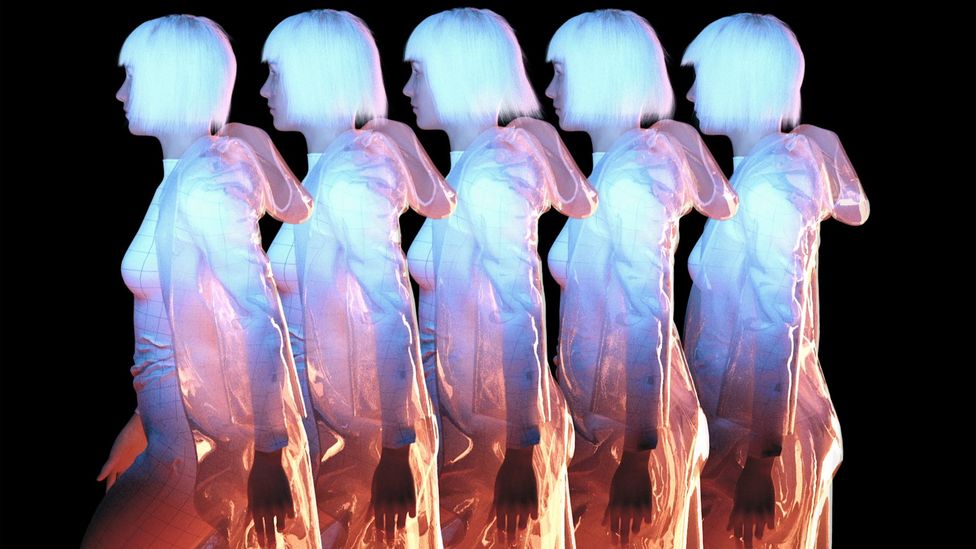
Norwegian retailer Carlings launched a digital collection in 2018, paving the way ahead (Credit: Carlings)
"At that place is a clear tendency to blending the concrete world with online content," agrees Matthew Drinkwater, of the London Higher of Fashion'southward Fashion Innovation Agency. His vision posits a future in which, using augmented-reality glasses that overlayg digital imagery onto the existent world, we 'share' the clothes we want to exist seen wearing into the AR glasses of others who are participating.
Pie-in-the-sky? Not quite. Working with Lucasfilm's immersive entertainment sectionalization ILMxLAB, Drinkwater introduced the project at designer Steven Tai'south London Fashion Week 2018 presentation.
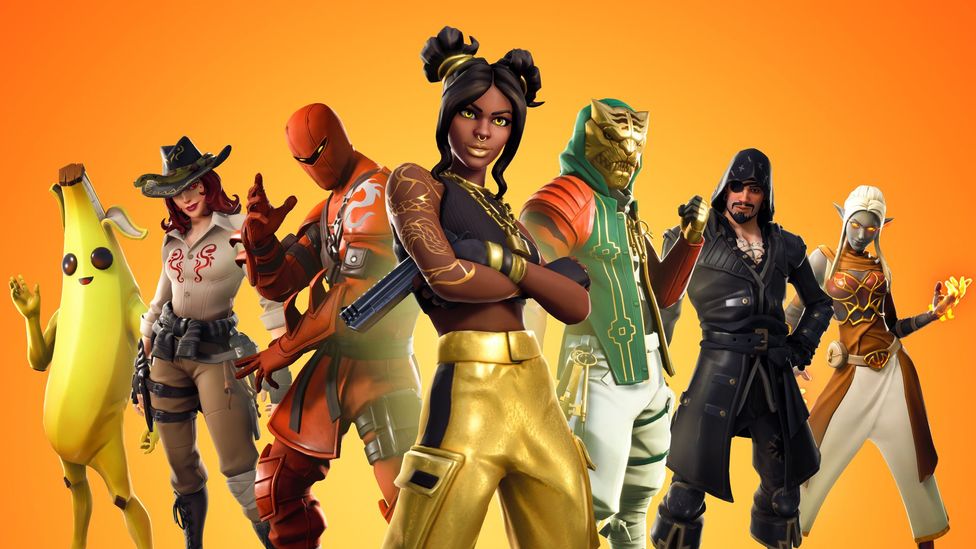
Games such as Fortnite offer players unlike identities for their avatars, a sign of things to come up in fashion (Credit: Ballsy Games)
"The project hints at a future where we will exist able to download content to our clothing, viewable through AR glasses, and present ourselves differently to everyone around us," says Drinkwater. "Our identities are constantly evolving and becoming more fluid by straddling both the digital and concrete realms," adds Stott. "Digital fashion allows people to fully experiment with how they would like to be perceived – and button limitless creative boundaries. A hairstyle made from water, a clothes that alters its shape according to sound: these are all possible."
Dauntless new world
But, if the thought of operating and so completely online makes you jumpy, at that place are more concrete applications for the tech. Co-ordinate to the Ellen MacArthur Foundation, $500 billion is lost every year in clothing under-use and waste product costs; 87% of all way fabricated goes to landfill. And so what would happen if we simply fabricated clothes people really wanted? This is the concept behind NY-based digital agency Neuro Studio'south latest work, Solventus 2019, a collection for which human being models were 3D-scanned to obtain precise measurements before the garments were designed directly onto digital avatars.
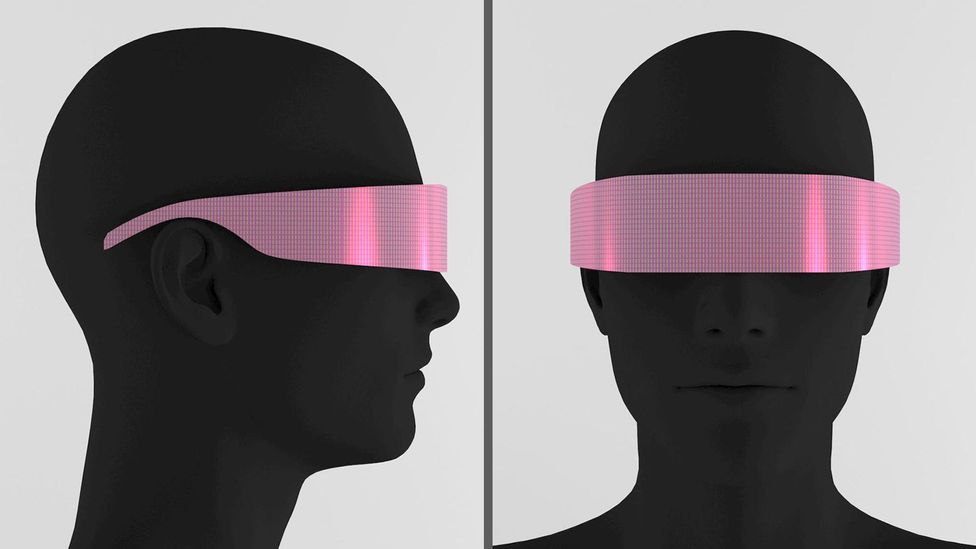
Virtual-reality technology will play a fundamental role in future fashion (Credit: Carlings)
The intention, eventually, is to simply make the wearing apparel – capes, trunk harnesses and leggings congenital with body-supporting weaves and cold atmospheric condition fabrics; very post-apocalyptic – when someone orders them.
And there is, of class, more: Neuro Studio's collection encompasses 3D-printing, the tech that allows designers to tailor-make pieces digitally for individual customers. Sportswear companies such as Nike, which already allows shoppers to design their own trainers, posit a future where consumers will be able to 3D impress their ain shoes at home. Shoppers could become designers – when streetwear label Hype couldn't decide which design to go for, they let their customers choose via an Instagram mail service.
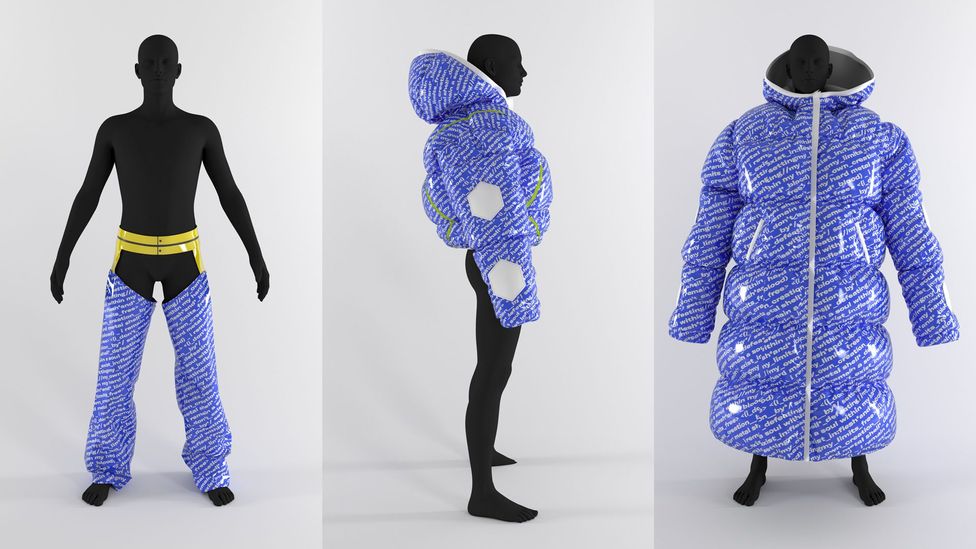
Style due east-fitted to users' photos has already been created by Carlings, and is ready to be more widespread in years to come (Credit: Carlings)
We are, says Stott, moving ever closer to consumer-designed article of clothing. "Way – the industry it once was – no longer holds the cultural imagination or kudos it one time did," she says. "The hegemony of fashion influencers has shifted in contempo years, from designers, creative directors and magazine editors to the people. The consumer wants creative input and hyper-personalised products, and technology is empowering them to exercise so."
At the same time, the engineering that goes into apparel themselves is galloping ahead. Smart cloth companies are developing materials that can gather data such as, in the case of the Nike Adapt BB basketball shoe, whether a wearer needs to alter their strike in order to avoid injury. "In the future, with the roll out of 5G, dress will function as a new interface, impacting on the way we communicate with the continued earth and with each other," says Mano ten Napel, founder of digital magazine FashNerd.
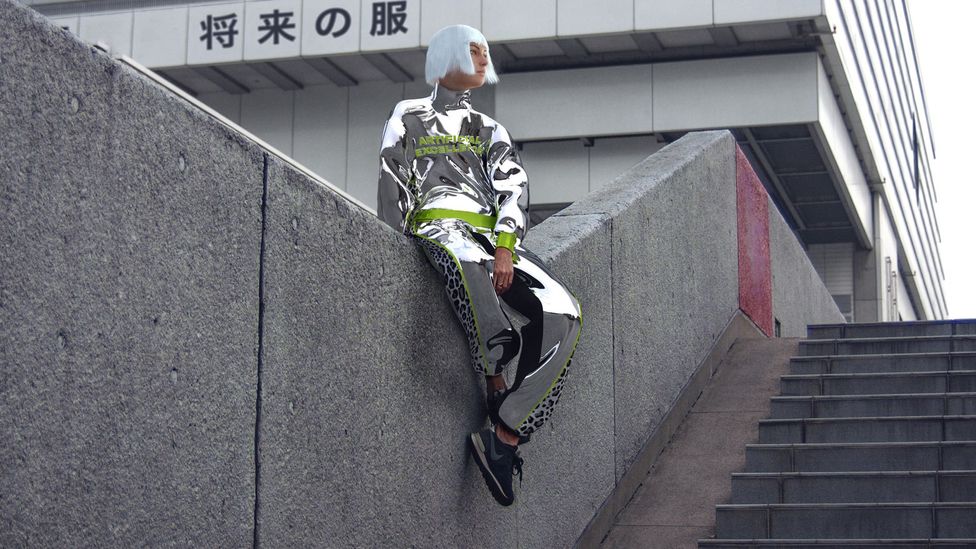
In the hereafter habiliment will become increasingly how-do-you-do-tech (Credit: Carlings)
Whether or not these technologies will bachelor to all, as in the case of fast fashion , is some other matter. "I look at social behaviours," reflects fashion forecaster Geraldine Wharry. "And I think supply scarcity – in terms of h2o and fabric shortages and costs going up, for example – is going to exist a big one. When those things happen, people shift their budgets for what they actually need to survive." And fast manner? "It'due south an outdated model," says Wharry. "I simply cannot see how it can continue. Brands without some kind of sustainability strategy are in trouble."
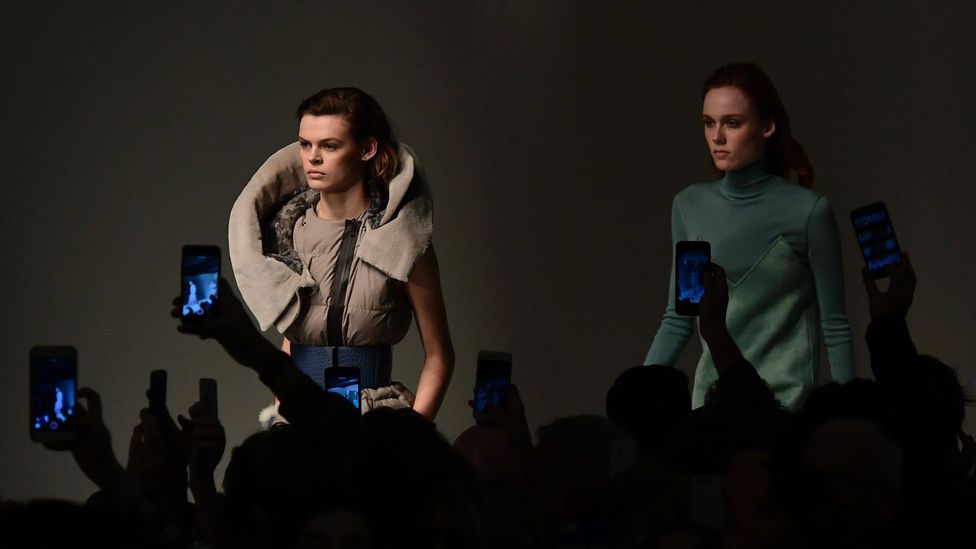
Smartphones already play a major part in the fashion industry (Credit: Getty)
So where will the ordinary person turn for their fashion fix? As future tech evolves, parallel movements are showing a render to the hand made and the tactile. "There'southward a lot of interest in craft," says Wharry. "It'south a unlike way of connecting with the clothes." Secondhand markets are exploding; according to fashion resale site ThredUP, sites like itself are growing 24 times faster than the retail industry as a whole. Meanwhile, the rental economy is gaining traction. "In style, rental can provide newness without the environmental price," says Sara Arnold of Higher Studio.
"Humans even so need to be clothed then we will see a shift in the mode in which we access clothing in the hereafter," says Stott. "Ownership is no longer the end goal. We outsource our music and picture choices to digital subscription services, and we will see a similar motion with clothing powered by AI. People will subscribe to cardinal manner services, and borrow clothes on a brusque-term basis according to their needs and lifestyle changes, reducing the masses of wear sitting unused in a closet."
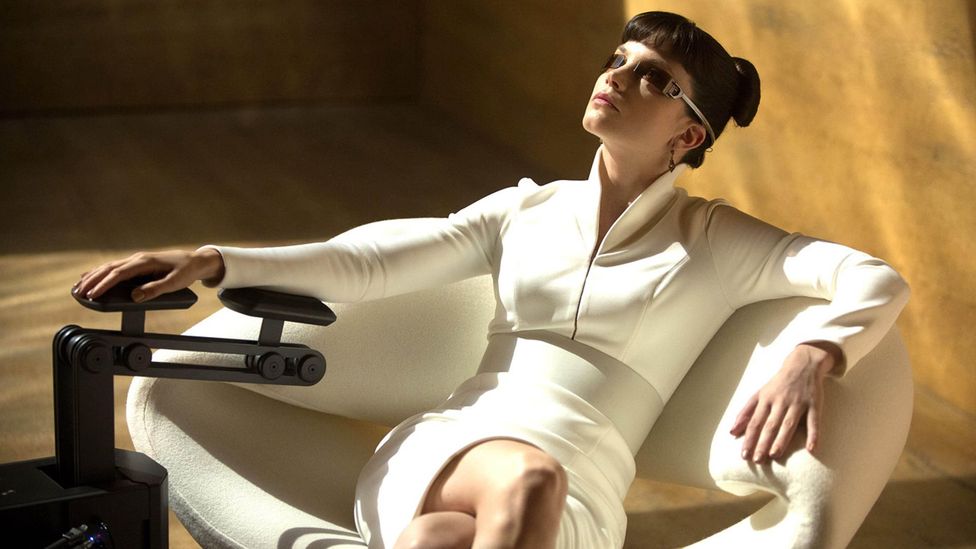
The grapheme Luv is attired in white in the dystopian film Blade Runner 2049 (Credit: Alamy)
Yet we get our clothes, mode will retain its identity equally a form of escapism and expression, peculiarly as planetary weather condition become more hard. "If you await at the Corking Depression, there was a lot of glitz and glamour," says Wharry. "And if you look at the trends correct at present, in that location's a lot of colour. Fashion is always a mirror of what is going on in society. There could exist so much difference betwixt the haves and the take-nots in the future that it could create very improvident fashion."
If y'all would like to comment on this story or annihilation else you have seen on BBC Civilization, caput over to our Facebook page or message us onTwitter .
And if yous liked this story, sign upwards for the weekly bbc.com features newsletter , called "If You Merely Read 6 Things This Week". A handpicked selection of stories from BBC Futurity, Culture, Uppercase and Travel, delivered to your inbox every Fri.
0 Response to "Fashion Has Not Changed in 20 Years"
Post a Comment